2002 North Main Street
Santa Ana, California 92706
TEL: 714.567.3600
The Ann Cullen Collection: Dong Kingman
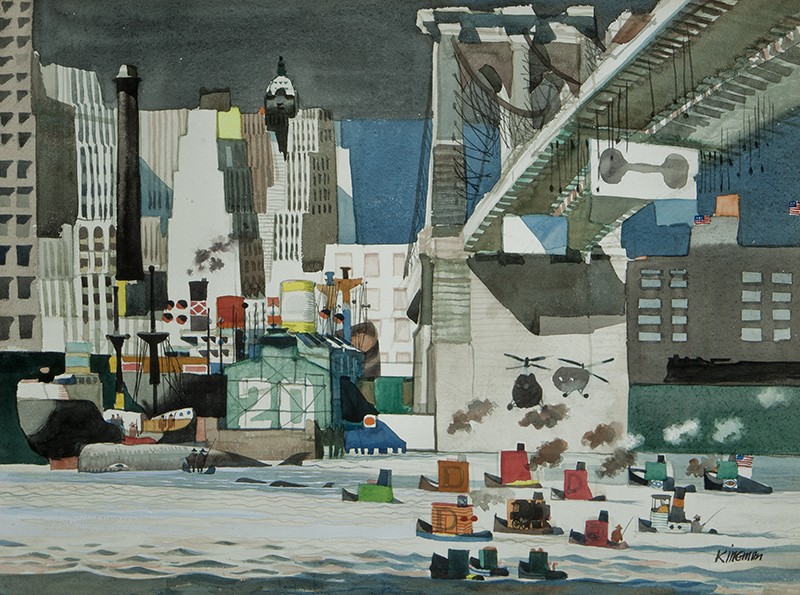 |
| Bridge and Tugboats, mid 20th Century Dong Kingman (American, 1911 - 2000); New York City, New York Watercolor on paper; 19 1/2 x 29 1/2 in. 2018.6.11 Ann and Bill Cullen Memorial Collection |
Delightful, Diligent
As this series winds to a close, we end by looking at an artist who—perhaps out of all of the artists in the collection had the closest friendship to Ann Cullen. Dong Kingman was a native Californian, a status which alongside his prowess in watercolor awarded him an early position among the other California Scene Painters. Much of his childhood was spent in Hong Kong, though. And when he did return to the United States, he slowly gravitated eastwards to New York. This might make him the odd man out in the Ann Cullen Collection, but it was in New York that he first met Ann and Bill Cullen and became the first artist to join what would eventually grow into the collection we know today.
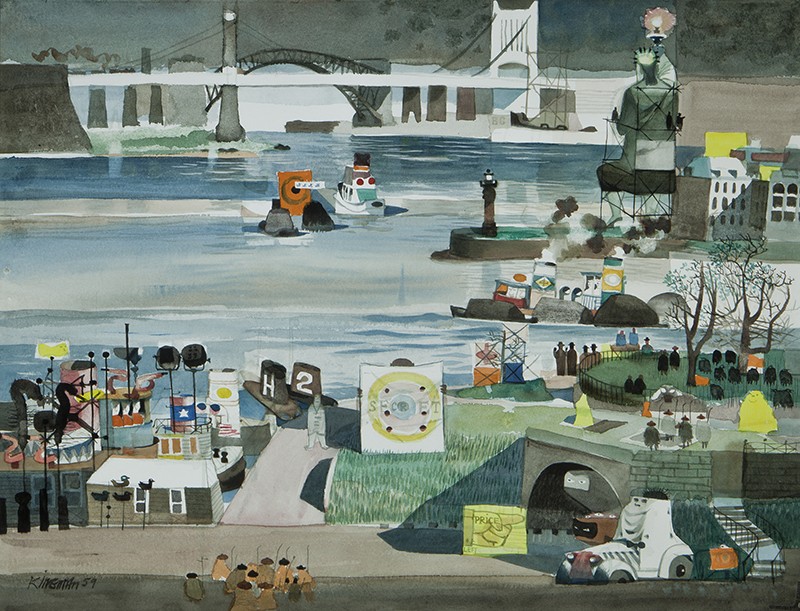 |
| View from Ann’s Window, 1959 Dong Kingman (American, 1911 - 2000); New York City, New York Watercolor on paper; 22 1/4 x 29 1/2 in. 2018.6.12 Ann and Bill Cullen Memorial Collection |
A Kingman is Born!
Dong Kingman was born in Oakland California in 1911. During the first World War, when German U-boats patrolled the Pacific looking to sink unwary travelers, the Dong family took the trans-Pacific voyage back to Hong Kong. It was here that he first fell in love with art. Kingman’s mother was a painter, but as is sometimes done in the traditional Chinese style, she would repeatedly paint the same scene over and over until she had it perfected. Kingman first learned painting in the same way, reproducing Chinese masterpieces until he could do the work with his eyes closed. It was when he began attending Lingan University in Hong Kong and met Sze-to Wai, himself a renowned Chinese painter, that Kingman was introduced to Van Gogh, Cezanne, Matisse, and the other great impressionist European painters. The ultimate result was a synthesis: a western style greatly influenced Chinese painting and calligraphy, and never far removed from Chinese motifs.
| Photographs of Dong Kingman painting View from Ann’s Window, 1959 |
Brushwacking in the Asphalt Jungle
An untimely return to California at the onset of the Great Depression led to some troubles for Kingman. At first, he worked odd service jobs, but his dedication to painting negatively affected all of his other pursuits. Finally, in 1936 the government’s WPA began commissioning paintings and public works and he jumped at the opportunity. He painted over 300 works with the relief program. With each masterful painting he slowly garnered more attention, and by 1942 won a Guggenheim grant which allowed him to travel around the United States. It was during these travels that he first experienced New York. It would be a muse for him, a beautiful dichotomy that was equal parts lonesome and crowded, one he would spend the better part of his life painting. He moved his family there in the ‘50s and began the tireless work of chronicling the city that never sleeps, always with a smile on his face.
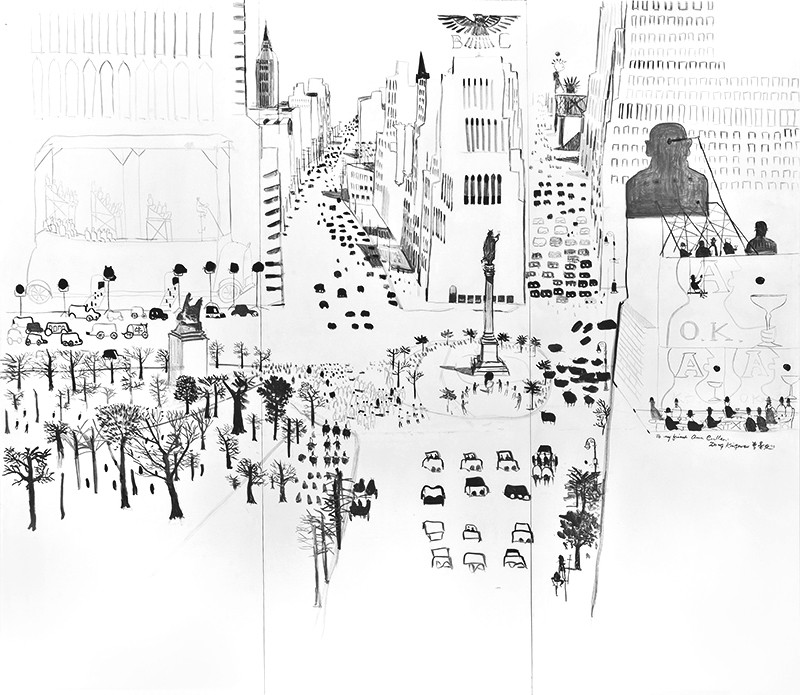 |
| View from 25 CPW, 1964 Dong Kingman (American, 1911 - 2000); New York City, New York Ink and acrylic on board; 84 x 96 in. 2018.6.13 Ann and Bill Cullen Memorial Collection |
Rear Window
Ann Cullen commissioned a painting from Dong Kingman in 1959. It was a mildly overcast New York day on which Kingman came over to Ann and Bill Cullen’s apartment and painted the view from her window as he saw it. He worked diligently, contemplatively. Ann captured the moments on film. The first result of the day’s work was, of course, the water-colored artwork. The painting carries with it all of the complex hallmarks of a Kingman work: a palette constructed from nine or fewer paints blended to meet his polychrome needs; a duality in the very composition of the work so that it can simultaneously be an intimate and anonymous affair—Kingman’s works have been described by critics as both microscopic and far seeing; and a sense of humor that is equal parts subtle and surreal. It takes some thought for a seated Lady Liberty to produce a chuckle. Maybe Kingman saw New York’s most symbolic statue in scaffolding and figured she was getting a well-deserved rest. As for the other pieces of the tableaux such as a giant holding sign that reads “Secret,” cars with distinct faces, small islands of Chinese rice farmers, and what is without a doubt a ghost, one finds it hard to imagine these eccentricities were really haunting the Manhattan waterfront.
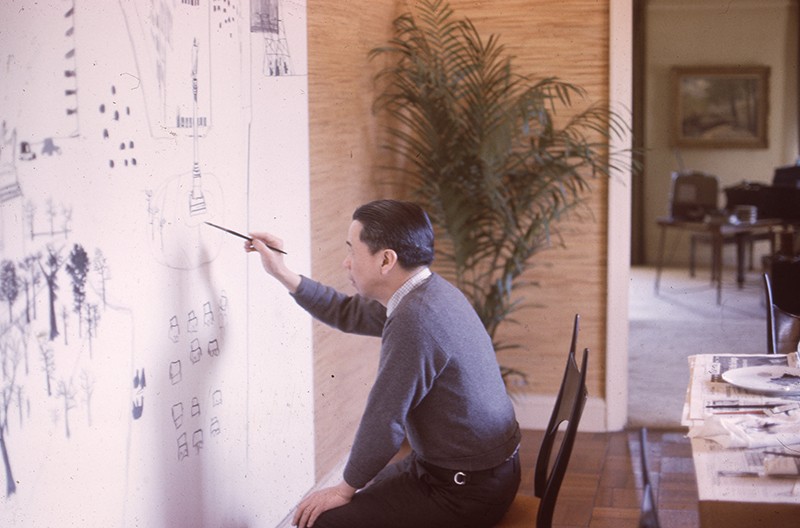 |
| Dong Kingman painting View from 25 CPW, 1964 |
Once More, Through the Looking Glass
The second result of this encounter was a friendship between Ann and Kingman. We began measuring friendships in terms of Christmas cards in our last post, so it only makes sense to do so once more. Ann and Dong were avid participants in annual holiday correspondence until shortly before Dong’s passing in 2000. Moreover, Dong sent Ann signed copies of his books and invitations to new gallery openings with the hope that he and his wife Helena would see her there. A grander token of this friendship was Kingman’s 1964 going away gift to Ann and Bill Cullen, View from 25CPW. Dong wanted to create a painting with all the various monuments of New York to give to them as they left. The eventual black and white painting was an 8-foot wide triptych created on site in Ann’s dining room. The Big Apple’s landmarks such as the Empire State Building, the Statue of Liberty, and Columbus Circle are all present, even if only one of these could actually be seen from Ann’s window. Like Kingman’s other works, the more time one spends poring over the details of this painting the more one is rewarded: the bulky shapes of bulls line the streets, pedestrian specks embark on a Seussian bus, the statue of Columbus has moved from his usual pose to raise a glass—presumably in toast of Ann’s farewell. The painting appears to be unfinished. It went unsigned for almost 30 years until, in 1993, Kingman finally had the chance to dedicate the work, “To my friend Ann Cullen.” Farewell!
Ann Cullen Collection photography sponsored by the Bowers California Art Council, Text and images may be under copyright. Please contact Collection Department for permission to use. References are available on request. Information subject to change upon further research.

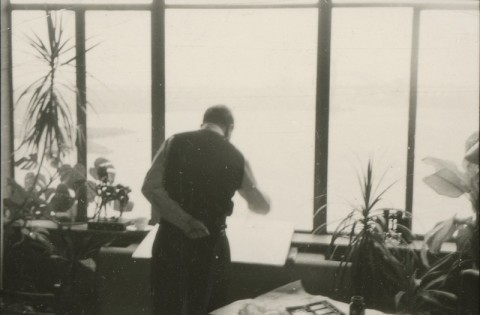
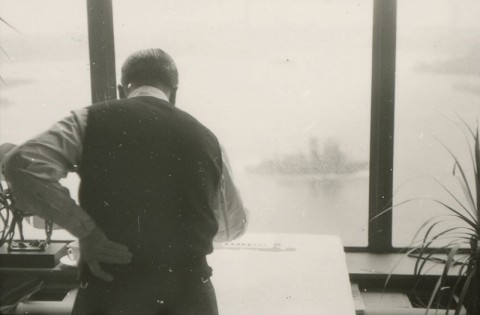
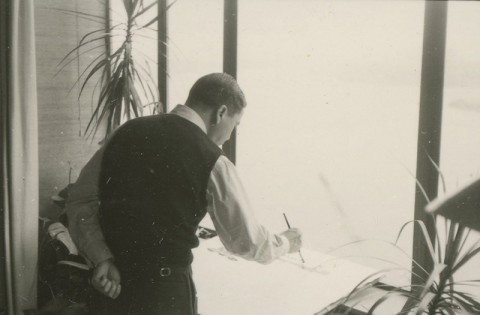
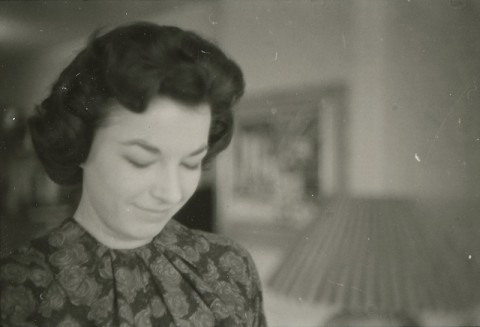
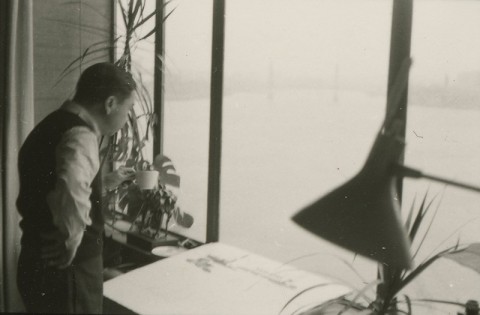
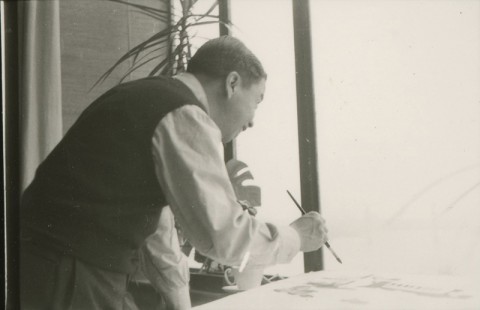
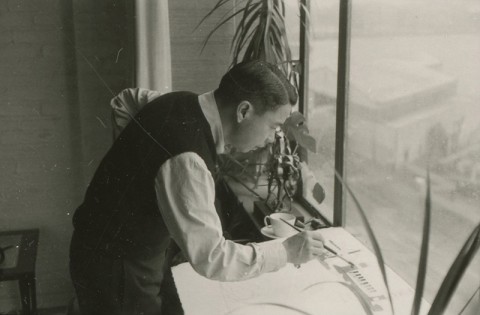
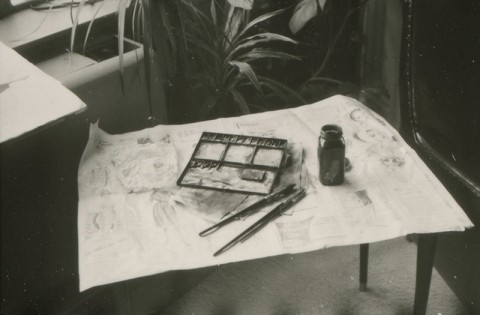
Comments